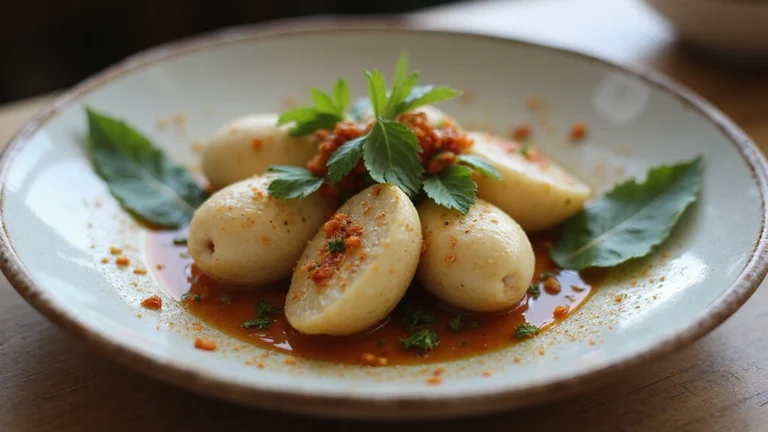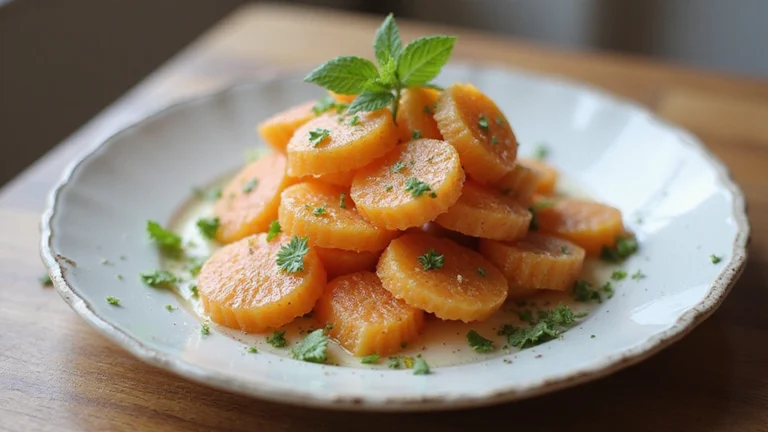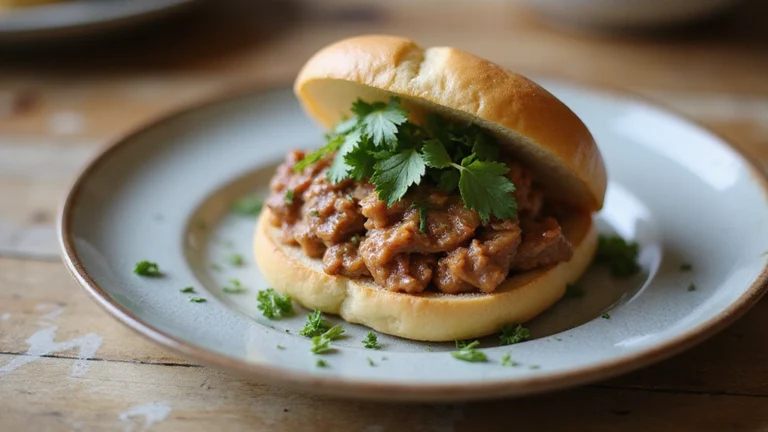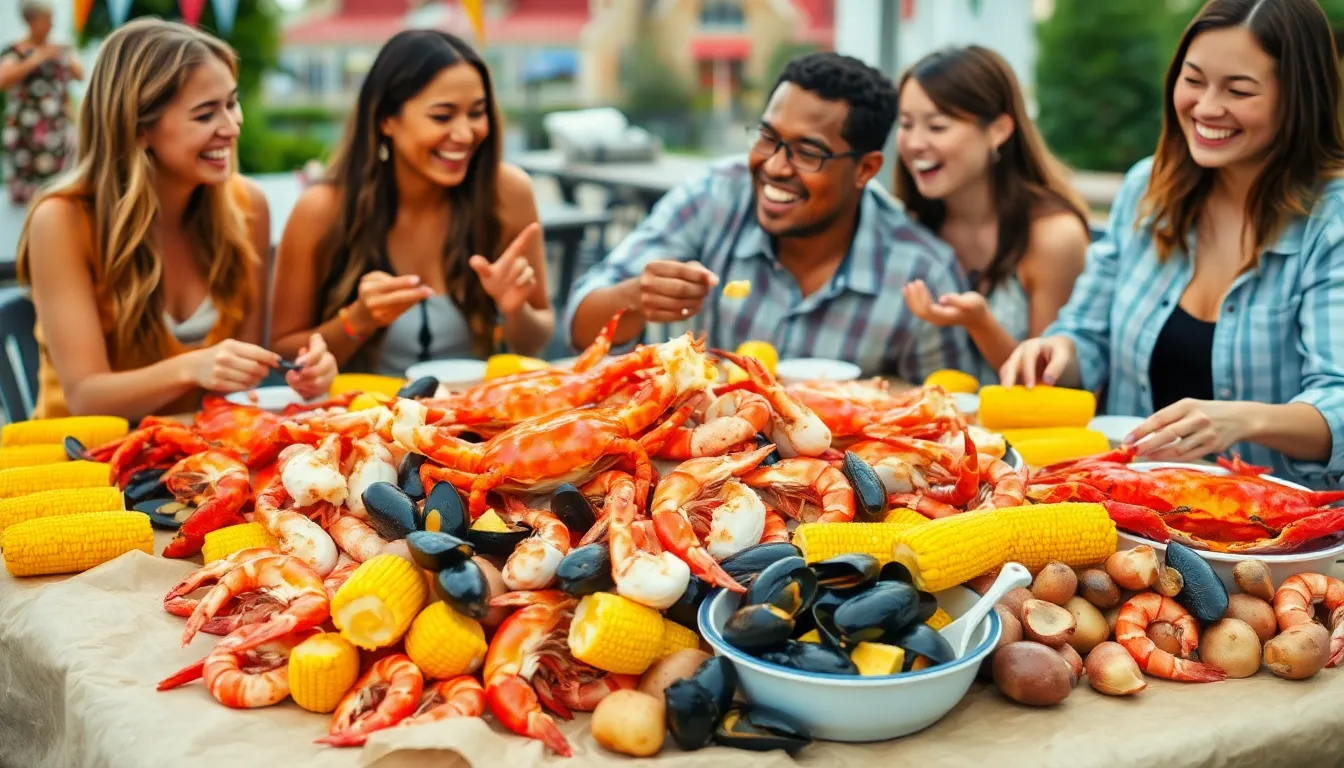
Are you ready to transform your seafood experience with an Asian seafood boil? This flavor-packed feast combines the communal joy of traditional seafood boils with the bold, aromatic spices of Asian cuisine.
Imagine tender crab legs, plump shrimp, and succulent mussels swimming in a fragrant broth infused with lemongrass, ginger, and chili. Unlike traditional Cajun boils, the Asian seafood boil introduces soy sauce, fish sauce, and star anise for a complex umami profile that’ll have you licking your fingers clean. It’s the perfect dish for gatherings – simply spread newspaper across your table, pour out the steaming seafood mixture, and let everyone dig in with their hands.
You’ll love how this cross-cultural culinary creation brings together the best of both worlds – the casual, communal dining experience of American seafood boils with the intense, aromatic flavors of Asian cooking traditions.
What Is An Asian Seafood Boil?
An Asian seafood boil represents a creative fusion that blends the communal joy of traditional American seafood boils with the bold aromatic flavors of Asian cuisine. This culinary crossover features fresh seafood—typically crab legs shrimp mussels and clams—simmered in a fragrant broth infused with distinctly Asian ingredients.
Unlike traditional Cajun-style boils the Asian variant incorporates elements like lemongrass ginger garlic and Thai chilies to create a complex flavor profile. The broth often contains umami-rich additions such as fish sauce soy sauce and sometimes coconut milk which penetrate the seafood during cooking.
What truly distinguishes an Asian seafood boil is its unique balance of spicy tangy and savory notes. The heat level can range from mild to fiery depending on your preference for chili peppers or hot sauce. Many recipes include butter which creates a silky richness that coats each piece of seafood.
The dining experience remains delightfully hands-on. You tear into crab legs peel shrimp and use your fingers to enjoy every morsel just as you would with a traditional seafood boil. This interactive eating style makes Asian seafood boils perfect for gatherings where food becomes the centerpiece of social connection.
Accompaniments often include corn on the cob potatoes and sometimes Asian-inspired sides like rice or steamed buns to soak up the flavorful broth. The entire spread is typically served family-style either directly on a paper-lined table or in large sharing bowls encouraging everyone to dig in together.
Key Ingredients For An Asian Seafood Boil
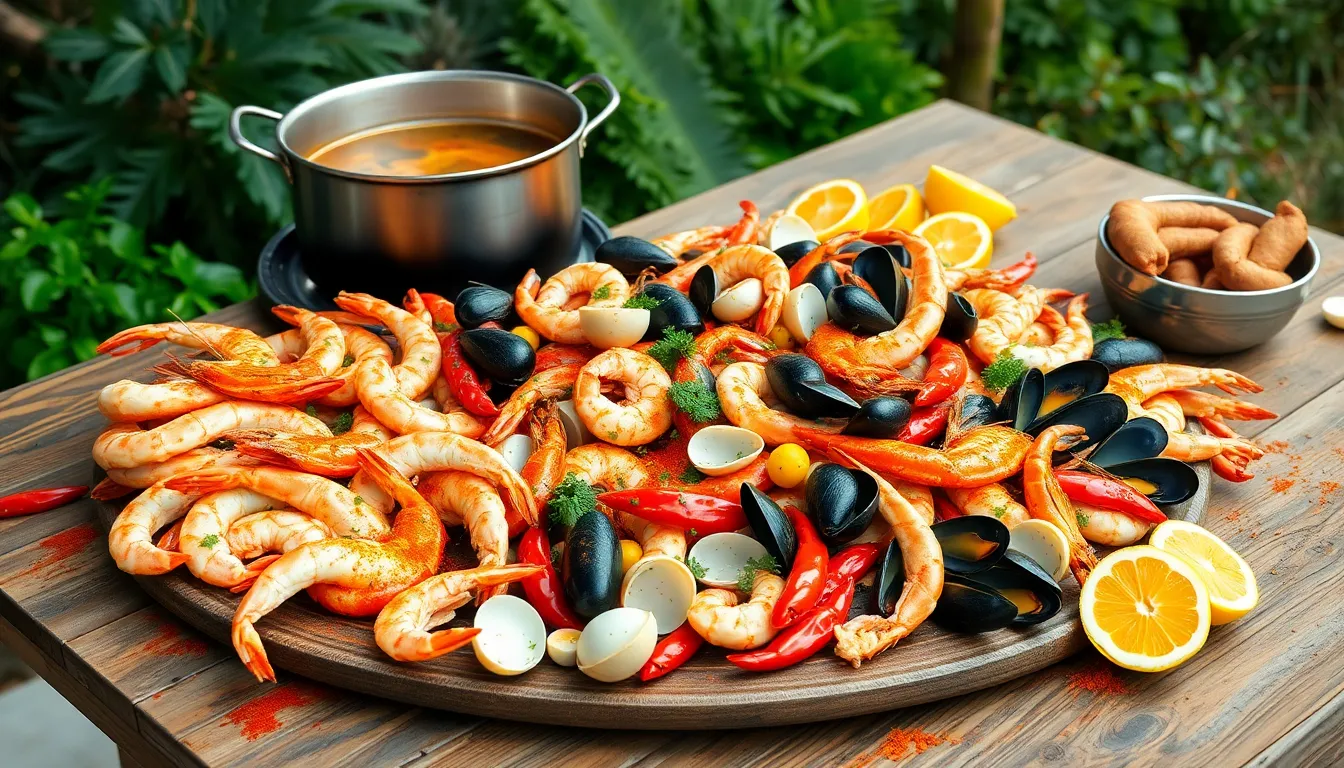
Creating the perfect Asian seafood boil requires exact ingredients that deliver authentic flavors and textures. The following components form the foundation of this vibrant dish that blends traditional seafood boils with Asian culinary influences.
Seafood Options
Fresh seafood serves as the star of any Asian seafood boil, providing the primary protein and flavor base:
- Shrimp (fresh or jumbo size for impressive presentation)
- Manila clams with their sweet flavor profile
- King crab legs or snow crab clusters for dramatic effect
- Crawfish for those who enjoy the traditional boil experience
- Mussels that absorb the aromatic broth beautifully
- Razor clams for their distinctive taste and texture
You can customize your seafood selection based on seasonal availability or personal preferences. Many seafood markets offer combination packages specifically designed for boils.
Asian Aromatics And Spices
The distinctive flavor profile comes from a fusion of Asian and Cajun spices:
- Fresh garlic cloves or powder for foundational flavor
- Lemongrass stalks that provide citrusy brightness
- Large onions halved to infuse the broth
- Chili powder and cayenne pepper for controllable heat levels
- Paprika for color and subtle smokiness
- Lemon pepper for brightness and complexity
- Bay leaves that add depth to the broth
- Old Bay seasoning as a traditional seafood boil element
- Fresh parsley for color and herbaceous notes
- Hot sauce or chili paste to adjust spice levels
- Butter mixed with garlic and lemon juice for the finishing sauce
These aromatics transform a simple seafood boil into an Asian-inspired feast with layers of complex flavors.
Broth Base Components
The broth serves as the flavor vehicle that infuses every piece of seafood:
- Water as the primary liquid (sometimes mixed with beer for depth)
- Seafood boil seasoning blends like Zatarain’s
- Salt to enhance all other flavors
- Lemons or oranges halved for citrus brightness
- Whole garlic heads with tops cut off
- Fish sauce for authentic Asian umami
- Andouille or kielbasa sausage for complementary protein (optional)
- New potatoes and corn cobs as traditional boil additions
Your broth requires proper simmering with these seasonings before adding seafood. After cooking, many recipes recommend tossing the cooked seafood in garlic lemon butter sauce for a rich finishing touch that clings to each morsel.
Equipment Needed
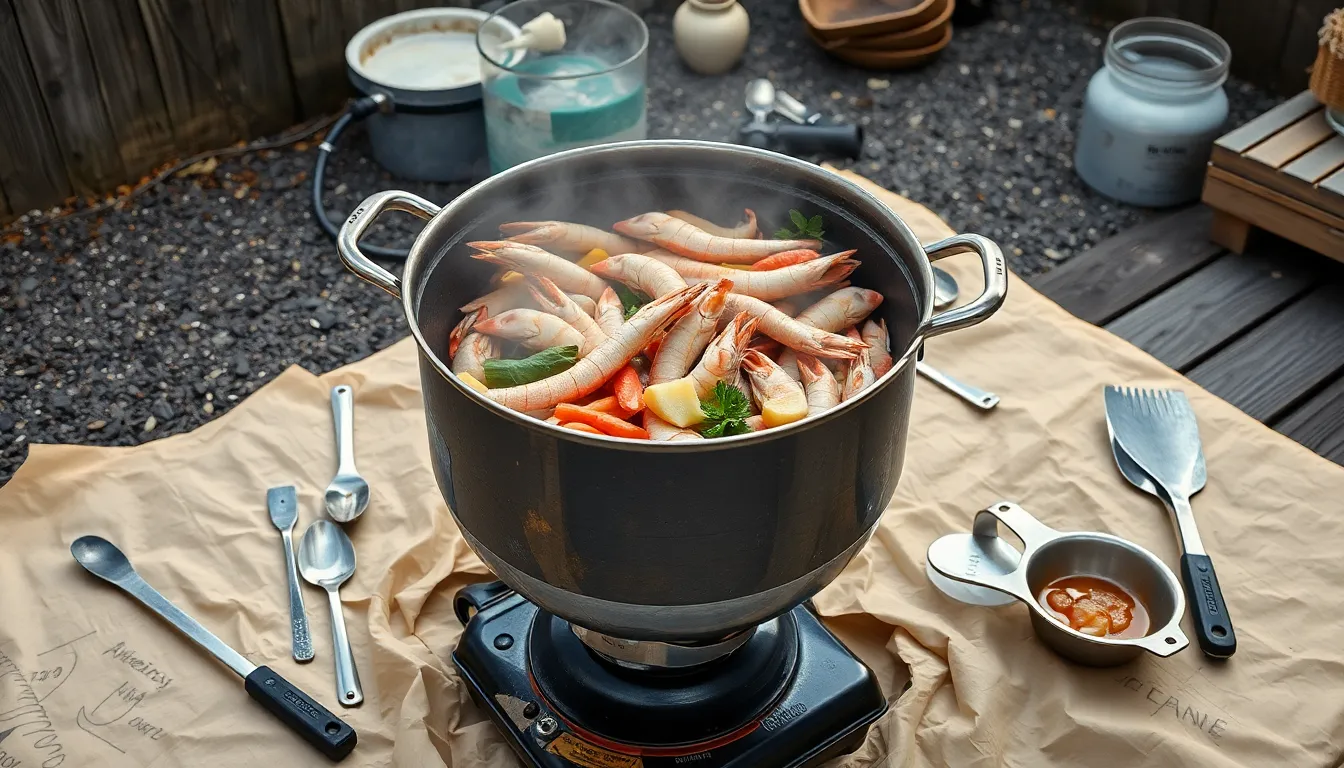
Preparing an Asian seafood boil requires exact equipment to ensure your feast comes together perfectly. Having the right tools on hand will make the cooking process smoother and more enjoyable while ensuring all those delicious flavors properly infuse your seafood.
Essential Cooking Vessels
A large stock pot or boiling pot with 10-40 quart capacity serves as the foundation of any successful seafood boil. This substantial size accommodates all your seafood varieties plus vegetables without overcrowding which allows for even cooking. Many experienced cooks prefer a Dutch oven or stock pot with a built-in strainer insert for easier food management.
Your pot should ideally include a removable strainer basket which proves invaluable when cooking seafood. This feature allows you to easily lift out delicate items like shrimp or clams at their perfect doneness while letting heartier ingredients continue cooking. The basket also simplifies serving by draining excess liquid before transferring food to your table.
Heat Sources and Utensils
For outdoor cooking or large gatherings a powerful propane burner provides the intense heat needed to quickly bring water to a rolling boil. Triple jet burners work exceptionally well for maintaining consistent high temperatures throughout the cooking process which is critical for properly cooked seafood.
Several long-handled utensils should be part of your arsenal including sturdy spoons or paddles for safe stirring without risking burns. A thermo-paddle works particularly well for managing ingredients in hot liquid while maintaining a safe distance from steam and splashes.
Measurement and Seasoning Tools
Precise measuring spoons and containers help you portion out the complex blend of Asian and Cajun seasonings that give this dish its distinctive character. These tools ensure you achieve the perfect balance of fish sauce brown sugar and spice blends that form the foundation of authentic Asian seafood boil flavor.
Serving Equipment
Set up a low table covered with butcher paper or newspaper for the authentic seafood boil experience. This traditional serving method not only creates a communal dining atmosphere but also makes cleanup remarkably simple. Remember to provide a handwashing station with wet wipes or access to running water as eating seafood boil properly means getting your hands deliciously messy.
With this equipment ready you’ll be fully prepared to create an impressive Asian seafood boil that combines the best of traditional seafood boils with vibrant Asian flavor profiles for an unforgettable dining experience.
How To Prepare An Asian Seafood Boil
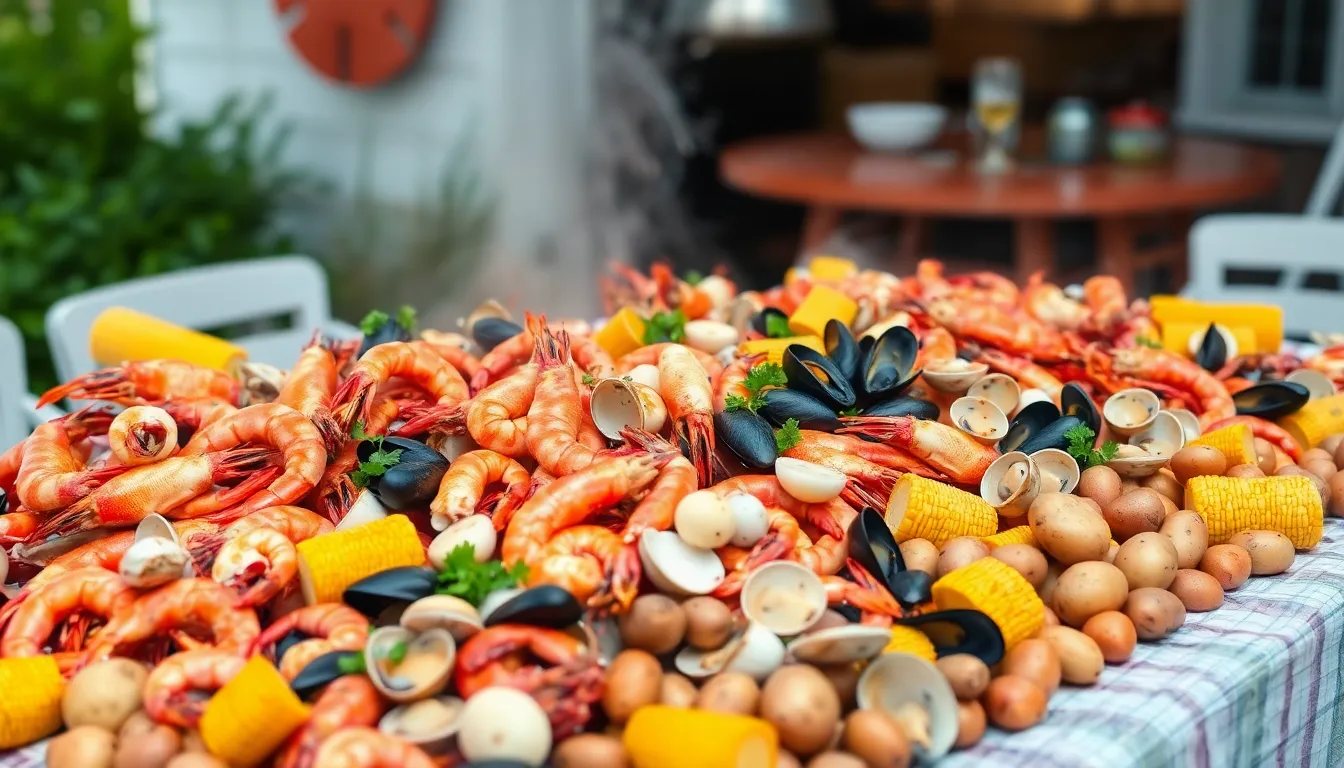
Now that you have all your ingredients and equipment ready, it’s time to create your impressive Asian seafood boil. This cooking process involves three key stages that build layers of flavor for an unforgettable feast.
Preparing The Seafood
Start by selecting a variety of fresh seafood including shrimp, crab clusters, clams, and mussels for the most authentic experience. Thoroughly rinse all seafood under cold running water to remove any debris or sand. Soak your clams in cold salted water for about 20 minutes to purge any remaining sand and grit. While the clams are soaking, devein and peel your shrimp if desired, though leaving the shells on can add more flavor to the broth. Cut fresh garlic and prepare accompanying vegetables such as corn on the cob (cut into 2-3 inch pieces), baby potatoes, and quartered onions. These vegetables not only complement the seafood but also absorb the flavorful broth during cooking.
Creating The Flavor Base
Combine your seasoning mix by blending Cajun and Asian spices in a bowl – include garlic powder, chili powder, lemon pepper, paprika, cayenne pepper, Old Bay seasoning, and a touch of sugar for balance. Fill your large stockpot with water (you can substitute part of the water with beer for additional depth) and bring it to a rolling boil. Add your prepared seasoning base along with aromatic ingredients including halved onions, fresh lemon wedges, several bay leaves, and salt to create a rich infusion. Allow this fragrant mixture to simmer for 15-20 minutes, giving the spices time to bloom and develop a complex, aromatic broth that will permeate your seafood.
Cooking The Boil
Begin the cooking process by adding potatoes to your simmering broth first, as they require the longest cooking time – approximately 15-20 minutes until fork-tender. Next, add corn on the cob pieces and smoked sausage or hot links to the pot, continuing to cook for another 5-10 minutes. Carefully add your clams and mussels to the pot, cooking until their shells open fully, which typically takes about 5 minutes. Finally, introduce the shrimp and crab clusters to the mixture, cooking just until the shrimp turn pink and opaque – usually 5-7 minutes. Turn off the heat immediately to prevent overcooking your delicate seafood, then cover the pot and let the residual heat finish the cooking process for an additional 2-3 minutes. For an extra touch of luxury, prepare a garlic butter sauce by melting butter with minced garlic, lemon juice, parsley, and Cajun seasonings, then pour this rich sauce over your seafood just before serving on a large communal platter or lined baking sheet.
Step-By-Step Asian Seafood Boil Recipe
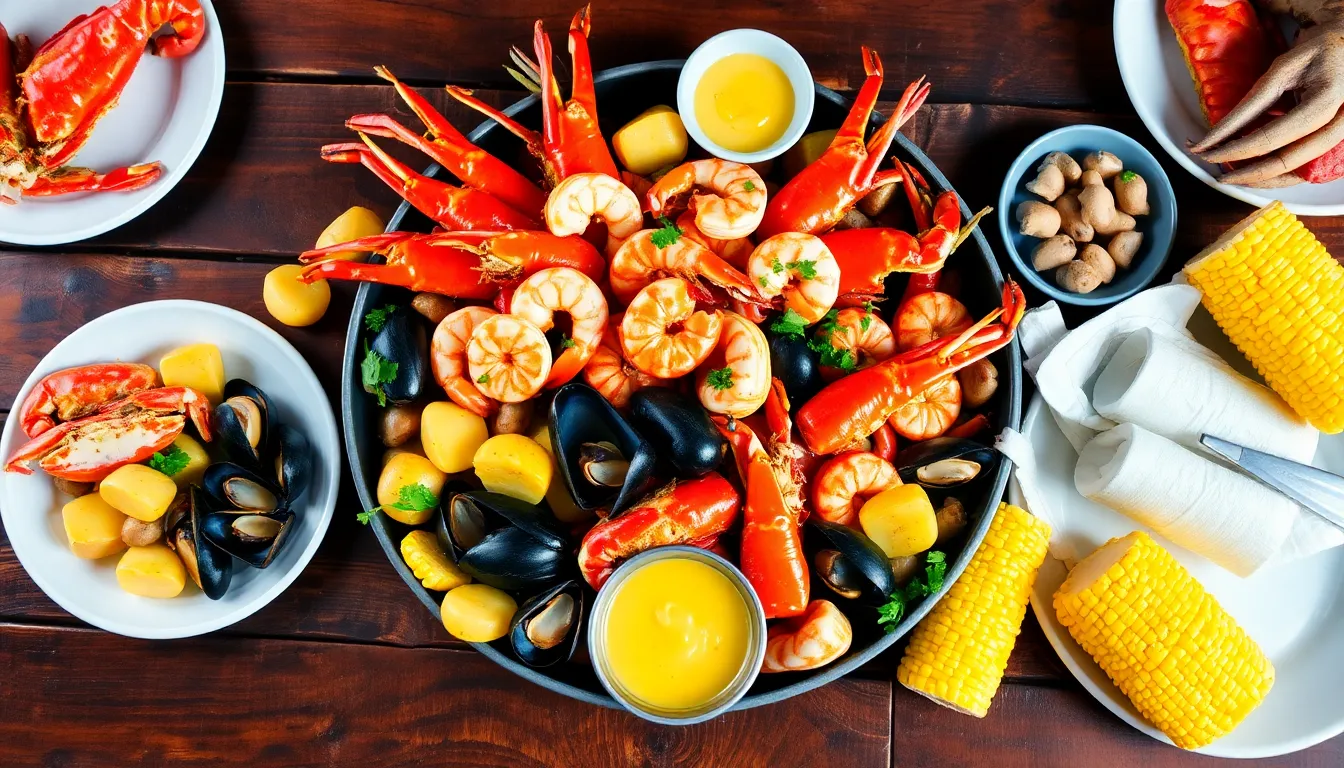
Transform your dining table into a feast with this Asian-inspired seafood boil that combines Cajun traditions with bold Asian flavors. Follow these simple steps to create a memorable communal meal that’s packed with seafood goodness.
Making The Broth
Start by preparing your seasoning blend. Combine Cajun spices including garlic powder, chili powder, paprika, cayenne pepper, lemon pepper, and salt in a small bowl. Add fish sauce and a pinch of sugar for that distinctive Asian twist that balances the heat with subtle sweetness.
Pour 4-5 quarts of water into a large stockpot and bring it to a boil. Add your seafood boil mix (such as Zatarain’s), halved onions, lemon halves, bay leaves, and salt. Let this aromatic base simmer for about 20 minutes to develop a rich flavor foundation. For additional depth, consider adding a bottle of beer to the broth.
Next, add your vegetables to the simmering broth. Place halved potatoes and corn on the cob into the pot, cooking until they’re tender but still firm (about 10-15 minutes). Then incorporate several cloves of garlic, additional bay leaves, and a splash of fish sauce to enhance the umami profile of your broth.
Adding The Seafood
Introduce sliced sausages like andouille to the pot first, allowing them to cook for approximately 5 minutes. The sausage will release flavorful oils that enrich your broth even further.
Add king crab legs and various shellfish such as manila clams and mussels to the boiling mixture. Cover the pot and simmer until the shellfish open and the crab warms through, which typically takes 3-7 minutes. Discard any shellfish that remain closed after cooking.
Finally, add your shrimp to the pot. Cook until they turn pink and are completely cooked through, about 5-7 minutes. Be careful not to overcook the shrimp as they can become tough and rubbery when left too long in the boiling broth.
Serving Suggestions
Drain your seafood and vegetables using a large colander or the strainer basket from your pot. Spread everything on a large baking sheet or directly onto newspaper or parchment paper for an authentic, casual presentation that encourages sharing.
Prepare a decadent garlic butter sauce by melting butter in a saucepan with minced garlic, lemon juice, and a sprinkle of your Cajun spice blend. Simmer this mixture until well combined, then drizzle or toss with your seafood boil before serving for an extra layer of richness.
Serve your Asian seafood boil hot with additional hot sauce on the side for those who enjoy extra heat. Garnish with fresh chopped parsley for a pop of color and freshness that complements the rich flavors.
For a complete experience, include hard-boiled eggs as a traditional side that adds extra protein and soaks up the flavorful broth. This creates a satisfying contrast to the seafood and vegetables in your boil.
Tips For The Perfect Asian Seafood Boil

Select the Freshest Seafood
Always prioritize quality when selecting seafood for your boil. Look for clear eyes and firm flesh in fish, tightly closed shells in clams and mussels, and a fresh ocean scent across all varieties. Purchase seafood the day you plan to cook it whenever possible. Rinse shellfish thoroughly under cold water before cooking to remove any sand or debris. For clams specifically, soak them in cold salted water for 20 minutes to help them purge sand.
Master the Broth
Your broth creates the foundation of flavor for the entire dish. Start with a large pot (at least 10 quarts) of water and enhance it with a combination of Cajun seasoning, Asian spices, and aromatics. Add 1 cup of vinegar to help soften seafood shells and make them easier to peel later. Beer or chicken broth can add remarkable depth to your boiling liquid. For authentic Asian flavors, incorporate fish sauce, lemongrass, and ginger to create a unique fusion profile that sets your boil apart from traditional Cajun versions.
Time Your Ingredients Properly
Cooking each component to perfection requires strategic timing:
- Start with potatoes and corn, cooking them until nearly tender (10-15 minutes)
- Add sausage varieties like andouille or kielbasa next
- Follow with harder-to-cook seafood like crab legs or lobster tails
- Add clams and mussels, cooking until their shells open
- Finish with quick-cooking items like shrimp (typically 2-3 minutes)
This sequence ensures nothing becomes overcooked while waiting for other ingredients to finish.
Balance Your Spice Levels
Control heat intensity by adjusting cayenne pepper or chili powder amounts. Start with less spice than you think necessary; you can always add more seasoning to the finished dish. Create a balanced flavor profile by incorporating both savory elements (garlic, fish sauce) and bright notes (lemon, lime, vinegar). Remember that spices will concentrate as the broth reduces, so taste and adjust throughout the cooking process.
Perfect Your Finishing Touches
Transform your seafood boil from great to extraordinary with a rich garlic butter sauce. Melt butter with minced garlic, lemon juice, and additional seasonings to drizzle over your drained seafood. If your sauce becomes too thick, add a few tablespoons of the cooking broth to thin it out. A sprinkle of fresh herbs like cilantro or green onions adds color and freshness to the final presentation.
Serve With Style
Present your Asian seafood boil spread across a table covered with butcher paper or newspaper for an authentic communal dining experience. Provide seafood crackers, picks, and plenty of napkins for your guests. Small bowls of additional sauce allow diners to customize their experience. Serving family-style encourages conversation and creates a memorable shared meal where everyone can dig in with their hands.
Sauce Variations

Asian seafood boil sauces offer a distinctive twist on traditional seafood boil flavors with their thick silky texture and complex flavor profiles. Unlike classic Cajun-style sauces these Asian-inspired variations coat the seafood perfectly while doubling as excellent dipping sauces. You’ll find several delicious options to elevate your next seafood feast.
Classic Asian Garlic Butter
This fundamental sauce combines the richness of butter with Asian aromatics for an unforgettable flavor experience. Start by melting 1 cup of butter in a saucepan over medium heat then add 8 minced garlic cloves and 2 tablespoons of freshly grated ginger. Cook until fragrant about 1-2 minutes. Stir in 3 tablespoons soy sauce 2 tablespoons honey 1 tablespoon Sriracha and a splash of rice wine vinegar. Simmer for 5 minutes until slightly thickened then finish with sliced scallions and a squeeze of lime juice before tossing with your seafood.
Spicy Honey Soy
For those who appreciate heat with sweetness this variation strikes the perfect balance. Melt ½ cup butter and sauté 6 minced garlic cloves until golden. Add ¼ cup honey 3 tablespoons soy sauce 2 tablespoons chili paste 1 tablespoon fish sauce and a teaspoon of sesame oil. Simmer gently allowing the flavors to meld then finish with a sprinkle of sesame seeds and chopped cilantro. This sauce delivers a beautiful sweet heat that enhances shellfish particularly well.
Coconut Curry Butter
This Southeast Asian-inspired sauce brings tropical flavors to your seafood boil. Heat 1 cup butter until melted then add 1 tablespoon Thai red curry paste 2 tablespoons minced lemongrass 4 minced garlic cloves and 1 tablespoon grated ginger. Cook for 2 minutes then stir in ½ cup coconut milk 1 tablespoon fish sauce and 1 teaspoon brown sugar. Simmer until slightly reduced about 5-7 minutes. Fresh lime juice and Thai basil added just before serving brighten this rich fragrant sauce.
Comparison of Sauce Styles
| Sauce Type | Key Flavors | Texture | Best Used With |
|---|---|---|---|
| Classic Asian Garlic Butter | Sweet umami garlicky | Thick silky | All seafood especially crab |
| Spicy Honey Soy | Sweet spicy savory | Medium thick | Shrimp and clams |
| Coconut Curry Butter | Creamy aromatic spiced | Rich velvety | Mussels and white fish |
| Classic Cajun Butter | Spicy smoky buttery | Light buttery | Traditional seafood boils |
| Garlic Lemon Butter | Mild tangy garlicky | Smooth buttery | Milder seafood options |
Customization Tips
You can easily adjust these sauce variations to suit your taste preferences. Increase chili paste or Sriracha for more heat or add additional honey or brown sugar for sweetness. Fresh herbs like cilantro Thai basil or mint make excellent finishing touches that brighten the rich buttery base. Consider adding citrus zest from lime or lemon to enhance the sauce with aromatic oils that complement seafood beautifully.
The thickness of your sauce can be modified by simmering longer for a more concentrated coating sauce or adding a splash of seafood broth for a thinner consistency. Remember that these sauces continue to develop flavor as they sit so preparing them slightly ahead of your seafood boil allows the ingredients to fully integrate.
Side Dishes To Serve With Asian Seafood Boil
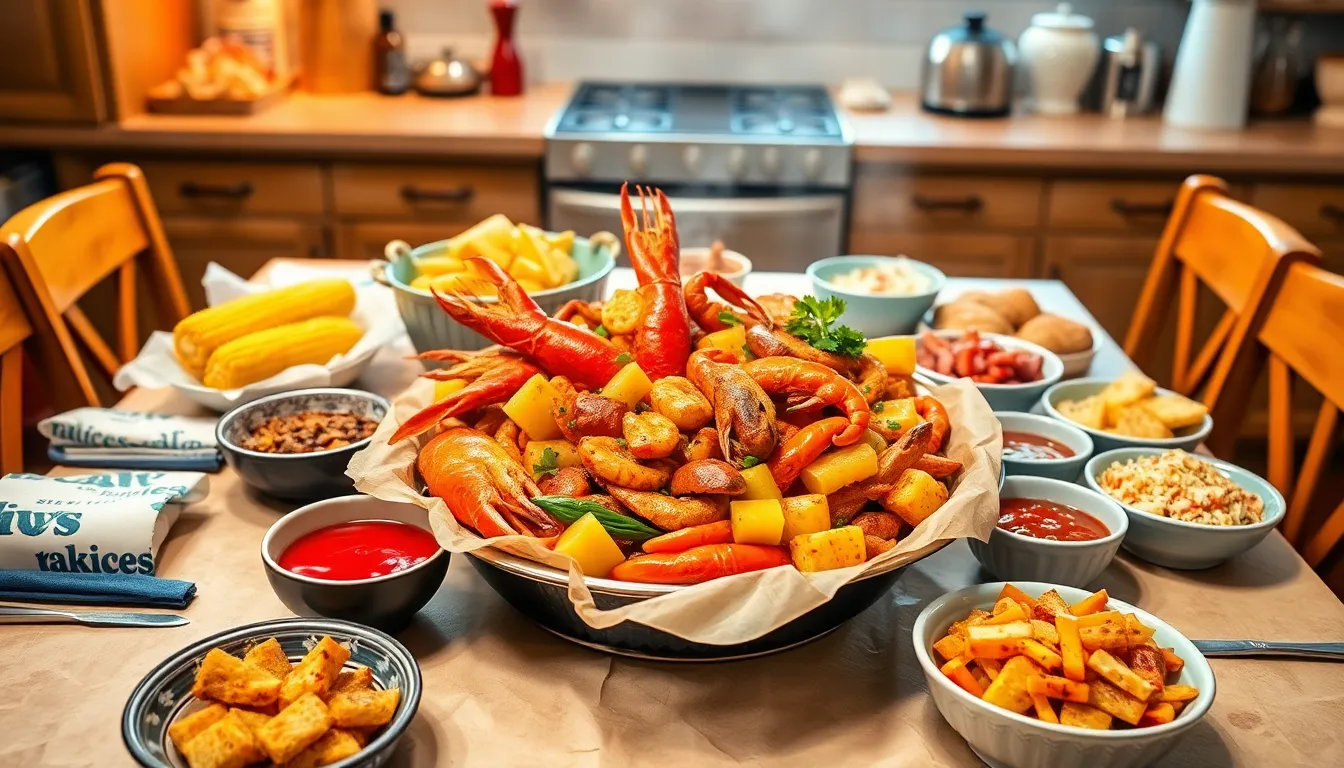
The perfect Asian seafood boil deserves complementary side dishes that balance its bold flavors and create a complete dining experience. These carefully selected accompaniments enhance your seafood feast while providing texture and flavor contrasts that elevate the entire meal.
Traditional Seafood Boil Staples
Corn on the Cob adds a natural sweetness that perfectly counterbalances the spicy seafood flavors. Simply boil fresh corn ears in the same broth as your seafood during the last 5-10 minutes of cooking to infuse them with those aromatic Asian flavors.
Boiled Red Potatoes serve as hearty additions that absorb the flavorful broth. Add small red potatoes to your boil about 15 minutes before your seafood to ensure they’re tender but not mushy. Their starchy quality helps temper the heat from spicier broths.
Garlic Bread provides a buttery vessel for soaking up the delicious broth. Prepare by slathering French bread with a mixture of softened butter minced garlic and herbs then baking until golden and crispy. For an upgraded version try making cheesy garlic bread by adding mozzarella or parmesan cheese before baking.
Asian-Inspired Accompaniments
Steamed Jasmine Rice offers a neutral canvas that complements the robust flavors of your seafood boil. Its subtle fragrance and light texture make it perfect for soaking up excess sauce while providing a filling component to the meal.
Stir-Fried Vegetables bring freshness and crunch to the table. Quick-cook bok choy snap peas or garlic green beans tossed with sesame oil and a splash of soy sauce create a vibrant side that balances the richness of the seafood.
Asian Slaw delivers a refreshing tangy element to cleanse the palate between bites of rich seafood. Combine shredded cabbage carrots and daikon with a light rice vinegar dressing enhanced with a touch of sesame oil for an authentic Asian flavor profile.
Dipping Sauces
Enhance your Asian seafood boil experience with additional dipping options beyond the main broth:
- Spicy Mayo: Mix mayonnaise with sriracha and a squeeze of lime juice
- Soy-Chili Sauce: Combine soy sauce with chili oil garlic and a hint of sugar
- Tangy Ponzu: Offer this citrus-based sauce for a bright acidic complement to rich seafood
Complete Your Spread
For an authentic experience serve everything family-style on a table covered with butcher paper. Place the seafood boil in the center with side dishes arranged around it allowing everyone to build their own perfect plate. Provide plenty of napkins seafood crackers and finger bowls with lemon water for clean-up as enjoying an Asian seafood boil is deliciously messy.
The ideal combination includes at least one starchy side like potatoes or rice one bread option for sauce-sopping and one fresh vegetable component to create a balanced memorable feast that honors both traditional seafood boil elements and Asian culinary influences.
How To Host An Asian Seafood Boil Party
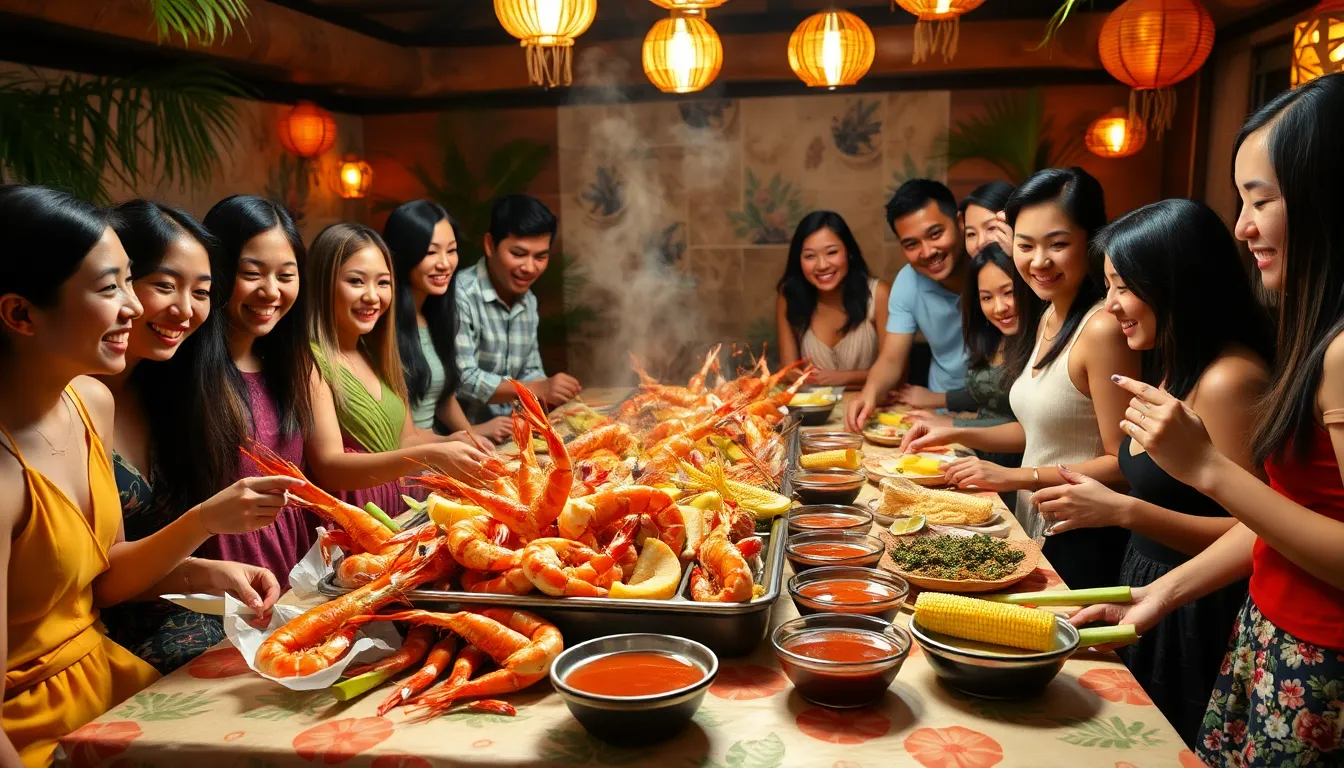
Hosting an Asian seafood boil party transforms an ordinary dinner into a memorable social event where food becomes the centerpiece of conversation and connection. Follow these essential steps to create an unforgettable seafood feast with Asian flair.
Plan Your Seafood and Ingredients
Select a variety of fresh seafood to create a diverse and exciting spread:
- Large shrimp (shell-on for maximum flavor)
- King crab legs or snow crab clusters
- Manila clams or mussels (cleaned thoroughly)
- Squid (if desired for variety)
Complement your seafood with traditional vegetables:
- Baby corn
- Bok choy
- Snow peas
- Shiitake or enoki mushrooms
- Corn on the cob (cut into 2-inch pieces)
- Baby potatoes
Prepare Asian-inspired dipping sauces to enhance the flavor experience:
- Chili garlic sauce
- Soy-lime dressing
- Spicy Szechuan sauce
- Classic Asian garlic butter sauce
Prepare the Boil Broth
Create a deeply aromatic broth base:
- Fill a large stock pot (10-40 quart capacity) with water
- Add Asian aromatics: 4-5 stalks lemongrass (bruised), 3-inch piece ginger (sliced), 8 garlic cloves (smashed), 3 star anise pods, 1 tablespoon Sichuan peppercorns, and 5-6 dried chili peppers
- Enhance with umami: 1/4 cup soy sauce, 2 tablespoons fish sauce, and 1 tablespoon honey or brown sugar
- Bring to a rolling boil before adding any ingredients
- Cook potatoes first (10-12 minutes), then corn (5 minutes)
- Add seafood in stages according to cooking times: crab legs (5-7 minutes), clams/mussels (until opened, about 3-5 minutes), shrimp (2-3 minutes)
Setting the Table and Atmosphere
Create a practical yet festive dining space:
- Cover your table with disposable butcher paper or newspapers for easy cleanup
- Provide plenty of napkins, wet wipes, and handwashing stations
- Set out seafood crackers, picks, and small bowls for shells and discards
- Arrange bamboo placemats and Asian-inspired serving dishes
- Add atmosphere with paper lanterns, string lights, or tropical decorations
- Create a playlist featuring Asian pop, reggae, or tropical beats to set the mood
Serving and Eating
Execute the final presentation with flair:
- Drain the seafood and vegetables using a large strainer basket
- Pour everything directly onto the covered table or large serving platters
- Drizzle with your prepared Asian garlic butter sauce or other finishing sauces
- Sprinkle with fresh herbs like cilantro, Thai basil, or sliced green onions
- Serve with small bowls of dipping sauces and lemon wedges
- Offer cold beverages like Thai iced tea, cold beer, or fruity cocktails
Encourage guests to eat with their hands for an authentic experience. The interactive nature of tearing into crab legs and peeling shrimp creates natural conversation and connection among your guests.
For larger gatherings, consider cooking in batches to ensure everything remains fresh and perfectly cooked. The communal style of eating creates an atmosphere of sharing and enjoyment that transforms a simple meal into a memorable celebration of Asian-inspired seafood flavors.
Storing And Reheating Leftovers
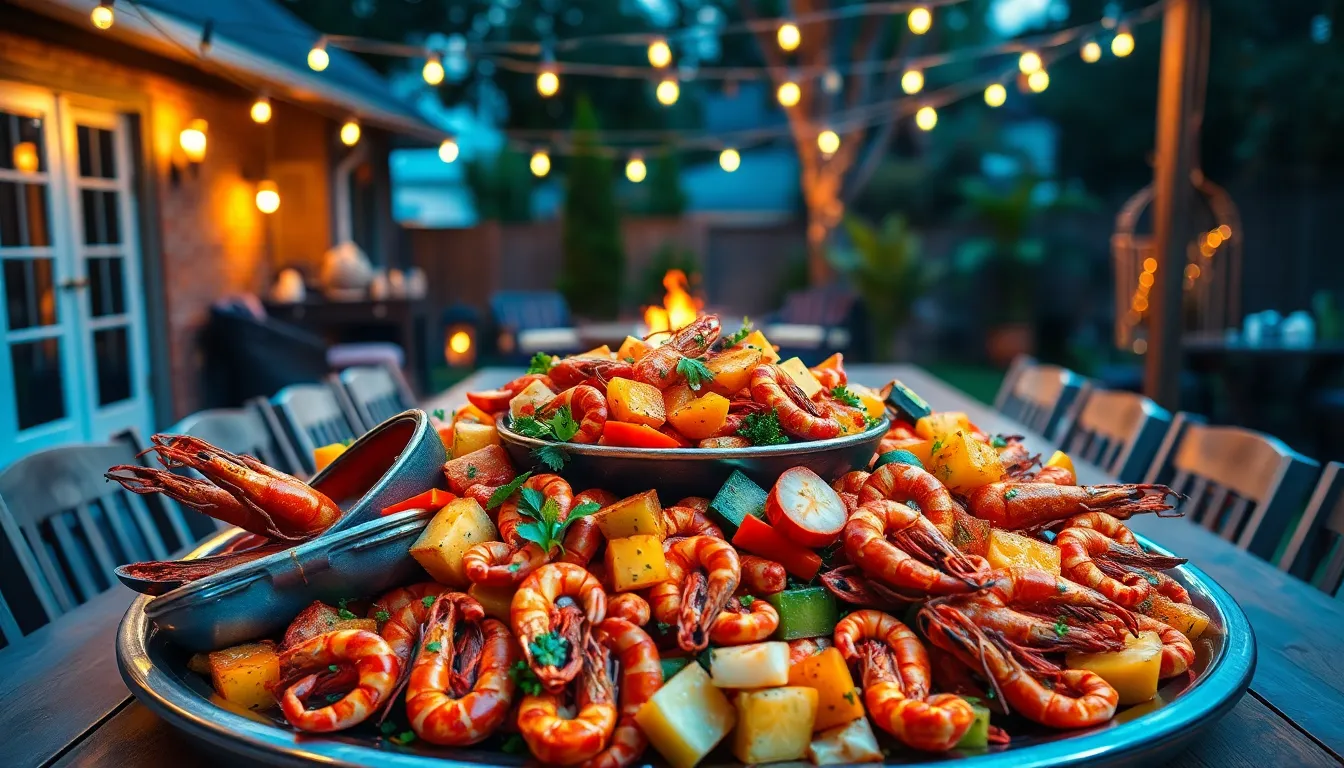
Properly storing your Asian seafood boil ensures you can enjoy those delicious flavors for days to come. Follow these guidelines to maintain quality and safety when handling leftovers.
Storage Guidelines
- Transfer cooled seafood boil to airtight containers to preserve freshness and prevent contamination
- Refrigerate leftovers for 2 to 3 days to maintain optimal flavor and texture
- For extended storage freeze your seafood boil for up to two months
- Always cool seafood to room temperature before transferring to freezer-safe containers
- Avoid freezing seafood in boil bags as they may not preserve well; instead use proper freezer containers
Remember that shellfish is particularly perishable and should be consumed within 2 days of refrigeration for best quality. Always check for signs of spoilage such as unusual odors or textures before enjoying your leftovers.
Reheating Methods
Oven Method
Heat your oven to 350°F and warm seafood boil portions for approximately 15 minutes until thoroughly heated. This technique works particularly well when reheating seafood boil bags.
Steaming Technique
Place leftovers in a steamer basket over simmering water for 5 to 10 minutes. Steaming gently reheats your seafood without drying it out preserving its succulent texture.
Air Fryer Approach
Set your air fryer to 300°F and reheat for 8 to 10 minutes. This method helps maintain some crispness in the seafood components while warming them through.
Pressure Cooker Option
Use your pressure cooker for a quick reheating solution that takes just a few minutes while retaining moisture.
Microwave Method
Heat small portions for 20 to 30 seconds at a time until warmed through. Be cautious not to overcook as seafood can quickly become rubbery in the microwave.
Boiling Bag Technique
Place leftovers in a zip-top bag then immerse the sealed bag in boiling water for 15 to 20 minutes. This method ensures thorough reheating while keeping all the flavors contained.
| Storage Method | Maximum Storage Time | Best For |
|---|---|---|
| Refrigeration | 2-3 days | Short-term storage |
| Freezer | Up to 2 months | Long-term storage |
| Shellfish | 2 days (refrigerated) | Optimal freshness |
The key to successful seafood boil leftovers lies in proper initial storage and gentle reheating techniques that preserve the delicate textures and rich flavors of your Asian-inspired feast.
Conclusion
The Asian seafood boil represents the perfect marriage of tradition and innovation taking classic seafood boil techniques and elevating them with vibrant Asian flavors. With fresh seafood bathed in aromatic broths and finished with customizable sauces you’re free to create a dining experience that’s uniquely yours.
What makes this feast truly special isn’t just the bold flavors but the shared experience it creates. Gathered around a table with friends and family peeling shrimp and cracking crab legs you’ll find connections deepening with every bite.
Whether you’re hosting a backyard party or preparing a special meal at home the Asian seafood boil offers endless possibilities for customization while maintaining its soul as a communal celebration of great food and better company.
Frequently Asked Questions
What is an Asian seafood boil?
An Asian seafood boil is a fusion dish that combines traditional seafood boils with Asian flavors and spices. It typically features crab legs, shrimp, mussels, and clams simmered in a fragrant broth enhanced with lemongrass, ginger, garlic, Thai chilies, fish sauce, and soy sauce. This communal dish is designed to be shared, with diners eating with their hands for an interactive dining experience.
What seafood is best for an Asian seafood boil?
Fresh seafood is essential for the best Asian seafood boil. Recommended options include shrimp (shell-on for flavor), Manila clams, king crab legs, and mussels. Make sure all shellfish is alive before cooking, with closed shells for clams and mussels. Always rinse seafood thoroughly and soak clams to remove sand before adding to your boil.
What equipment do I need for a seafood boil?
Essential equipment includes a large stock pot (10-40 quarts) with a removable strainer basket, a powerful propane burner for outdoor cooking, long-handled utensils for safely handling hot food, and precise measuring tools. For serving, prepare a low table covered with butcher paper for an authentic communal dining experience and provide a handwashing station.
How do I make the perfect Asian seafood boil broth?
Create a flavorful broth by combining Cajun seasoning with Asian ingredients like lemongrass, ginger, garlic, and Thai chilies. Add umami with fish sauce and soy sauce, then simmer to develop deep flavors. The key is balancing spicy, savory, and aromatic elements. Let the broth develop for at least 15-20 minutes before adding seafood for maximum flavor infusion.
How should I cook the seafood to ensure everything is perfectly done?
Layer ingredients according to cooking times. Start with potatoes (10-15 minutes), then add corn (5-7 minutes), followed by clams and mussels (4-6 minutes), sausage if using (3-4 minutes), and finally quick-cooking items like shrimp and pre-cooked crab legs (2-3 minutes). This staged approach ensures each component is perfectly cooked without anything becoming overcooked or rubbery.
What sauces complement an Asian seafood boil?
Three excellent sauce options are: Classic Asian Garlic Butter (with butter, garlic, ginger, and a splash of soy sauce), Spicy Honey Soy (combining soy sauce, honey, chili oil, and lime), and Coconut Curry Butter (featuring coconut milk, curry paste, and butter). Each sauce can be customized by adjusting spice levels or adding fresh herbs to suit your taste preferences.
What side dishes work well with an Asian seafood boil?
Traditional sides include corn on the cob and boiled red potatoes, which cook directly in the broth. Asian-inspired additions like steamed jasmine rice, stir-fried vegetables, and Asian slaw provide complementary flavors and textures. Serve various dipping sauces such as spicy mayo and ponzu on the side, and arrange everything family-style for an authentic experience.
How do I host a successful seafood boil party?
Plan for 1-1.5 pounds of seafood per person with a variety of options. Prepare the broth and sides ahead of time. Cover your table with butcher paper for easy cleanup and provide seafood crackers, picks, and wet wipes. Create a relaxed atmosphere where guests can eat with their hands and interact while enjoying the meal. The communal style naturally encourages conversation and connection.
How should I store and reheat seafood boil leftovers?
Store cooled seafood in airtight containers in the refrigerator for 2-3 days or freeze for up to two months. For reheating, use gentle methods like steaming, baking in foil at 275°F, or using an air fryer at 350°F for 3-4 minutes. Microwaving is quick but can toughen seafood, so use medium power with a damp paper towel cover. Shellfish is best consumed within two days for optimal freshness.
What makes Asian seafood boil different from traditional seafood boils?
The Asian seafood boil distinguishes itself through its unique flavor profile, incorporating ingredients like lemongrass, ginger, fish sauce, and soy sauce that aren’t found in traditional Cajun or Low Country boils. The finishing sauces often feature Asian elements like coconut milk or chili oil, and side dishes may include rice or Asian slaws rather than just corn and potatoes, creating a distinctive fusion experience.
